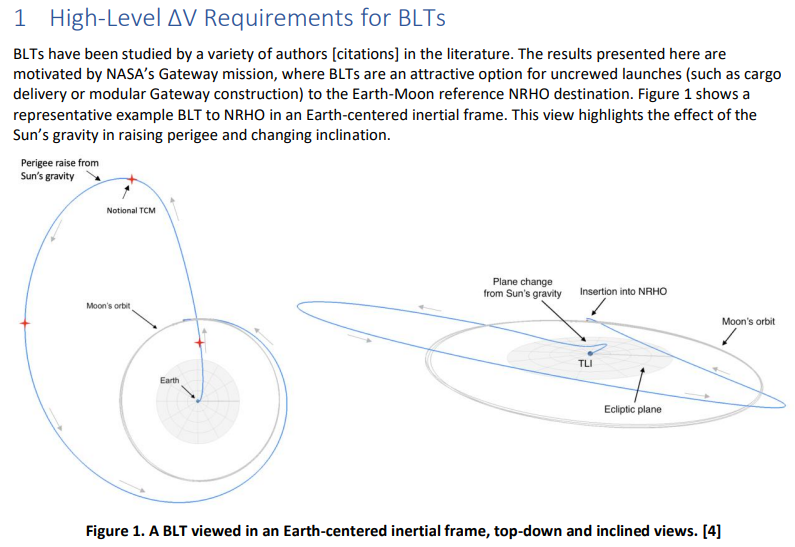Advanced Space has a great webpage detailing Ballistic Lunar Transfers (BLT) with links to numerous papers/presentations about BLTs. They all seem to refer back to Advanced Space's CTO Dr. Jeffery Parker's PhD thesis (available here$^1$). The webpage has this summary:
BLTs are a type of low-energy transfer in which a spacecraft launches 1-2 million kilometers away from the Earth (where the Sun’s gravity perturbation becomes dominant), then returns to Earth with a larger radius of perigee than before and a different geocentric orbit plane. When designed with the proper geometry, it is possible to choose the perigee to coincide with the Moon’s orbit, bringing the spacecraft into the vicinity of the Moon. For many three-body target orbits, it is possible to design the transfer such that it arrives at the target orbit with very little insertion 𝛥V required. In the ideal case, the transfer is ballistic (zero deterministic 𝛥V) after launch. This type of transfer is being considered to deliver the Logistics Module, lander elements, and other cargo to the lunar Gateway.
From their Ballistic Lunar Transfers Quick Reference Guide is this figure (and text) showing what an example trajectory looks like:
In a Scott Manley video interview with Rocket Lab CEO Peter Beck they show this high level Con Ops poster about the CAPSTONE mission:
Video cued at 30:30 where they begin discussing Lunar Photon & CAPSTONE:
Peter Beck says that Lunar Photon (aka Photon Interplanetary) needs to perform 8 burns total to raise the apoapsis and perform the final TLI over the course of about 8 days (the blurb in question says 7 days).
CAPSTONE is using an "outbound lunar flyby" to lower the C3 requirement for TLI, though this lengthens the time of flight until rendezvous with the Moon (from Ballistic Lunar Transfers Quick Reference Guide):
The exact transfer time is variable depending on launch date and TLI parameters. As a reference, the GRAIL mission used a BLT and had a transfer time of ~112 days (GRAIL-A):
(Wikipedia)
References:
- J. S. Parker, “Low-Energy Ballistic Lunar Transfers,” University of Colorado Boulder, PhD Thesis, 2007.



